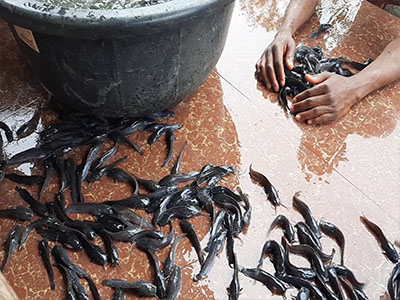Hybrid juvenile fish sometimes referred to as “crossbreeds” or “intergrades,” come into existence when two fish of different species reproduce. This can occur naturally in the wild, but it is also a phenomenon that has captured the interest of fish breeders and aquarists, who sometimes intentionally crossbreed species to create unique and visually striking hybrids. While the motivations behind creating hybrids can vary from scientific curiosity to increased productivity, these fish offer a window into the adaptability and genetic diversity within aquatic ecosystems.
Heteroclarias hybrid juveniles are hybrid products of a cross between male Heterobranchus longifilis and Female Clarias gariepinus. They are very rugged and disease-resistant, and they consume less feed when compared to clarias species.
Step-by-Step Guide on How to Raise Hybrid Juvenile Catfish
Raising hybrid juvenile catfish can be a rewarding endeavor, whether you are doing it for sales, or as part of a sustainable aquaculture project. Fish farming is the fastest-growing animal husbandry industry in Nigeria and many parts of the world.
Catfish hybrids often exhibit unique characteristics and can be hardy and fast-growing. Here’s a step-by-step guide to help you successfully raise hybrid juvenile catfish:
- Understand the Basic Requirements for Raising Hybrid Juvenile catfish
- Choose the Right Catfish Species
- Set Up a Suitable Tank or Pond
- Water Quality Management
- Feeding
- Growth Monitoring
- Disease Prevention
- Harvesting
- Grading and Separation
- Marketing and Sales
- Record Keeping




